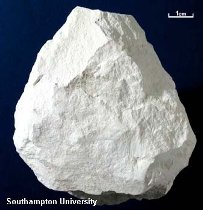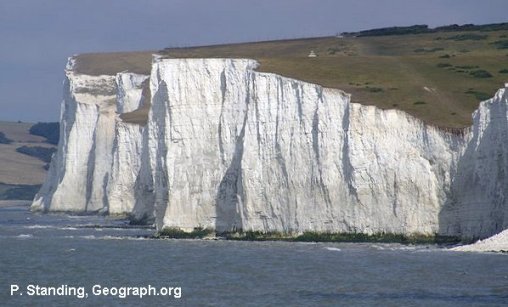Chalk cliffs, Sussex
 Chalk is a pure white limestone formed from the remains of tiny marine organisms (plankton) that lived and died in clear warm seas that covered much of Britain around 70 to 100 million years ago. When they died, they fell to the bottom in a rain of fine white mud. As chalk formed from the mud, layers and lumps of hard, glassy flint also developed - prized by stone-age man for tools.
Chalk is a pure white limestone formed from the remains of tiny marine organisms (plankton) that lived and died in clear warm seas that covered much of Britain around 70 to 100 million years ago. When they died, they fell to the bottom in a rain of fine white mud. As chalk formed from the mud, layers and lumps of hard, glassy flint also developed - prized by stone-age man for tools.The cliffs shown below are eroded by wave action at the cliff foot and, every few years, more of the cliffs above collapse – usually after heavy rain.
 Image to right: chalk plankton (coccoliths) seen under an electron microscope.
Image to right: chalk plankton (coccoliths) seen under an electron microscope.Chalk is very porous, so water drains down quickly from the surface into cracks and cavities in the rock beneath. This is why chalk landscapes are rather dry and bare. Chalk ground-water provides much of the tap water for east and south-east England.
Seven Sisters, Sussex








